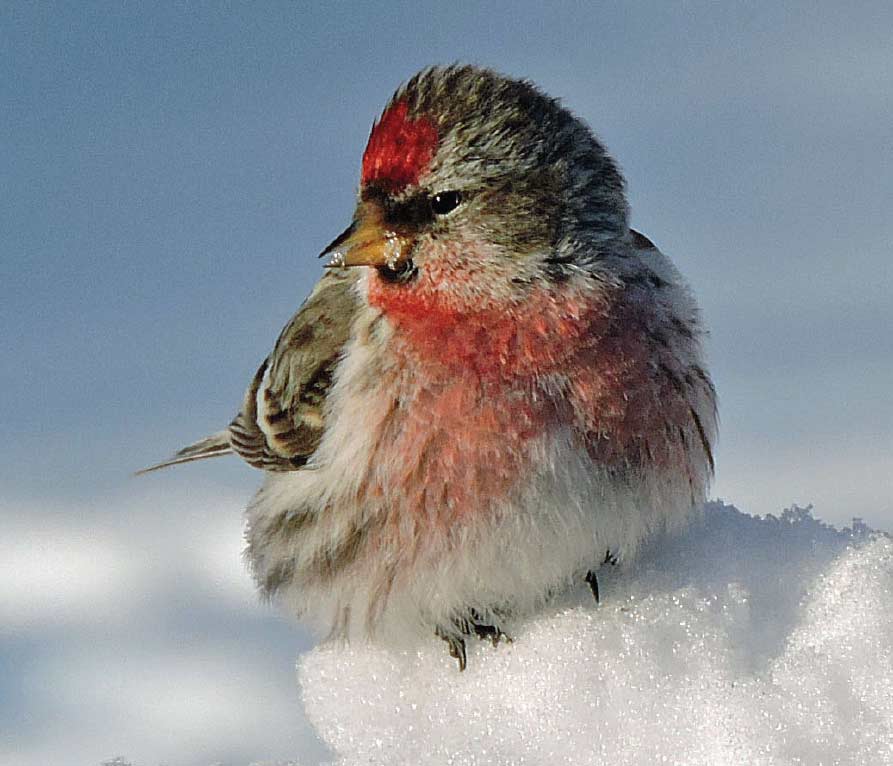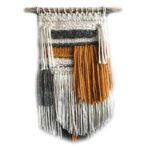
Redpoll
Birders across our region are hoping for an irruption of redpolls this winter. An irruption is a movement southward of northern resident species in years of low food availability. In addition to the common redpolls, irruptive species include evening grosbeaks and white-winged crossbills.
Throughout the boreal regions where the redpolls breed there has been a recent shortage of their normal diet, the seed crop of white birches. In response, these little members of the finch family may wander south from the Hudson Bay Lowlands and favour us with their presence this winter. Watch for them on birches, in weedy fields and at bird feeders. The exact itineraries of these roving birds are hard to predict, since they seem to travel in all directions. Redpolls are tiny greyish-brown, sparrow-sized birds, more washed out than similar-sized birds but sporting a prominent black chin and dark streaks on their flanks. A bright red cap on their forehead and the pinkish breasts of the males make them stand out from their southern relatives.
While here, redpolls seek out alternative foods, often appearing at bird feeders, where they make themselves right at home, sampling the new menu offerings and quickly acquiring a taste for black oil sunflower seed and nyger seed. Bird feeder owners who make it a habit to top up their feeders at first light will need to set the alarm even earlier for these guests. Redpolls are among the first on the scene in the morning. They learned long ago to get up early and not waste a bit of daylight.
During the few precious winter daylight hours, redpolls eat voraciously and store excess seeds into a sort of false crop – their diverticula. When darkness falls, they retire to a protected location out of the wind, and consume the seeds. They have other adaptations too, including longer winter feathers than most birds their size, and a heavier coat. They can also burrow into the snow, huddling together in a quinzhee-like snow shelter to keep warm. They have shorter extremities to prevent body heat from leaking away. Check out the stubby beak sometime – if you can find it. Amazing critters, given their size.
But what about other extremities, like their feet? In the summertime, their naked legs help to expel excess heat. These same legs are controlled by a sophisticated circulatory system, which functions in cold weather to control warm blood flow. The result is that the farthest parts of the legs are warmed just enough to keep them from freezing. Temperatures may actually vary from 36°C in the upper legs to only 3°C at the bottoms of the feet. However, the arteries carrying warm blood to the feet are situated close to the veins so there is no shock of very cold blood returning to the body.
If redpolls arrive at your feeder this winter, don’t worry about their welfare. These little balls of fluff with toothpick legs learned a long time ago how to cope with cold temperatures. Your bird feeder stocked with sunflower and nyger seeds will be a very welcome part of their winter stay.
Story by:
Terry Sprague
Photography by:
Sydney Smith




